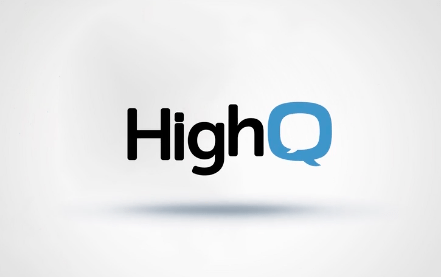
Artificial Lawyer recently caught up with Stuart Barr of UK-based collaboration software company, HighQ. We talked about how the London-based company is increasingly part of the ecosystem of legal AI technologies and how as a member of the rapidly changing legal tech scene it is also still evolving.
At first glance one might not think HighQ has much to do with legal AI technology or the new wave of legal automation. That is perhaps due to its renown for deal room, extranet and team collaboration technology, but the company is now adding new dimensions to its core applications that very much entwine with AI systems.
HighQ started life back in 2001 with a mission to improve the way transactions and deals were done using secure online deal rooms and extranets. Its innovations provided easy to use collaboration between all the parties in a deal to securely share files and later included the development of iSheets, which are like hybrid online databases and spreadsheets with an ability to store and capture structured data and optimise transactional processes.
In recent years the platform has expanded further to include project management and social collaboration tools to tackle many more collaboration challenges. This technology quickly became a mainstay of many transactional lawyers’ lives and the company today has a client list that includes around half of the Global 100 largest law firms and all of the UK top 20 law firms. That is good going, although of course they’ve had 16 years to build this client base, not the handful of years many legal AI companies have had so far.
The reason for HighQ’s success has been simple: they solved an everyday problem, which is always very hard to do, but equally always appreciated. After all, who wants to keep emailing a master file back and forth between all the parties in a deal when you can all work collaboratively together and deep dive into any aspect of the document and dataset by clicking through what is on an iSheet? Using HighQ seemed to meet a pain point in lawyers’ lives head on.
As often noted in the pages of Artificial Lawyer, some of the most successful applications of legal tech are not massively complex in their aims, but instead they solve a thorny problem experienced by many lawyers that others have not been able to solve or had not thought could be solved in that way. It seems that imagination in visualising a solution seems to be as much part of a legal tech company’s success as is the development of their underlying technology.
So far, so good. But this is not the end of the story. HighQ’s goal has been to evolve and much more is planned.

As Stuart Barr, Chief Product & Strategy Officer, explains: ‘We have been building up to this point. In the past the focus was very much on deal rooms and extranets. But now we do far more.’
There is something happening now which seems to be the beginning of an important symbiotic relationship with AI software.
Put simply the argument goes like this: if legal AI systems are zooming through thousands of documents and extracting relevant data then this data is only going to be useful if it can be organised in a way that is easy for lawyers to use and find meaning within.
Moreover, once the data is extracted and presented in a meaningful way can further actions be made to exploit this data to, for example, perform additional actions that produce value, such as automatically completing documents that refer back to this data, or automatically triaging the results of an AI system’s document review? Or can the findings of the AI review be meshed with a Q&A system built into an iSheet to help a lawyer discover the information they need?
And what about law firms making HighQ’s iSheets and AI companies’ document review systems become fully linked into a single legal tech ecosystem? Barr says this is something they have already made headway on.
For example, HighQ has integrated with several leading legal AI platforms to bring their widely adopted collaboration technology together with innovative artificial intelligence systems. RAVN and Neota Logic are two companies they have worked with.
The aim then is to see a fusion of AI review systems with more established legal technologies, rather than to see them as competing or out of step with each other.
‘We want HighQ to become a central part of a lawyer’s productivity toolset, to help them get their work done and engage with clients. We envisage a world where you have all the different aspects a lawyer needs coming together, such as document collaboration, project management, process optimisation, smart machine learning and artificial intelligence to transform the way we work,’ says Barr.
So, it turns out that HighQ, which started out in life trying to make the lives of M&A lawyers a bit easier back in 2001, is now very much wedded to the new era of AI and automation that is sweeping the legal sector.
But, there is one last question: will HighQ develop its own AI and embed machine learning in its system, after all, it’s already helping lawyers to find meaning in all that data, why not complete the circle?
On this question, Barr says we will have to watch this space.